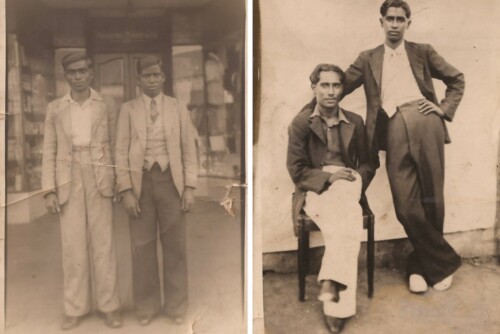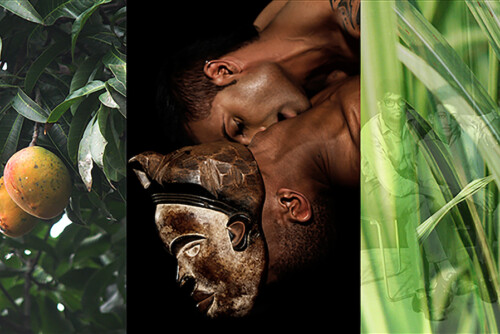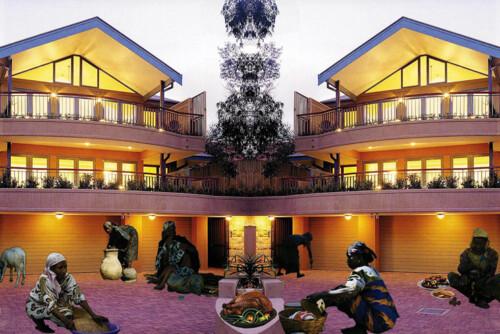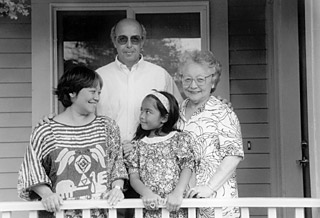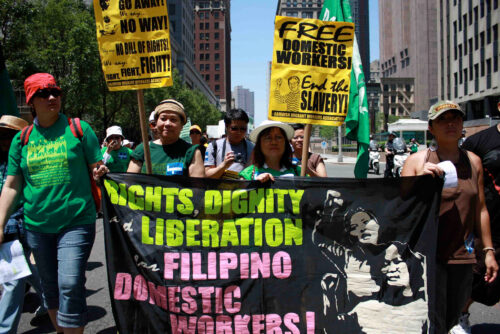The grounding impetus of comparative race studies rooted in the genealogy of ethnic studies is to, on the one hand, cultivate solidarities of resistance and, on the other hand, be a legible field of inquiry that is recognized for its academic and methodological rigor. What do we lose when we gloss over the complexities of relations that constitute solidarity and the heteronormative assumptions beneath them? This issue of Scholar & Feminist illustrates models of three-dimensional and complicated collaborations that emerge from a focus on intimacies that take place outside of – or under – the archive. 1 Cross-racial encounters are never just cross-racial. As black feminists remind us, moments of political transformation depend upon broad-based coalitions informed by the crosscutting dynamics and simultaneity of race, gender, and sexuality. 2 This intervention enables Afro-Asian studies to attain its political potential to create differently configured alliances across communities of color in time and space.
Coedited by Vanita Reddy and Anantha Sudhakar, this S&F issue speaks to the erasure of queer people of color and women in Afro-Asian politics. But as the editors note, this project not only is recuperative, but also shifts the political terrain. The contributors to this issue reveal what emerges when we examine our research questions, methods, and analyses through a different lens. A feminist and queer reorientation of Afro-Asian studies brashly reveals the field’s masculinist underpinnings. Reddy and Sudhakar assert that its canonical works feature black and Asian exchanges between strident male leaders or the “appropriate” heterosexual and platonic patriarchal pairings (Jimmy and Grace Lee Boggs or Yuri Kochiyama and Malcolm X signify the “appropriate” black man and Asian woman pairings). In response, the contributors cast a sideways glance at exalted meetings (Kumar’s discussion of Gandhi and Martin Luther King Jr.) and masculine rivalries (Huang’s discussion of the triangulation of Huey Newton, Chairman Mao, and Richard Nixon). The resulting alternative historical readings not only depict homosocial desires but also shore up the agency of black and Asian women in these meetings and rivalries. Revisiting the archive in this way leads to more ambivalent and less dogmatic interpretations of where actions, desires, and politics land: on betrayal, self-interest, racist desire, and decontextualized appropriation. Afro-Asian studies has come a long way.
As Reddy and Sudhakar discuss in their introduction to this issue, Afro-Asian studies emerged several decades ago by ethnic studies scholars especially within (South) Asian American studies. The field, with a cohort of books published in the early 2000s, initially focused on the decades of solidarity and exchange between Africa and Asia and their diasporas. For instance, Vijay Prashad’s Everybody Was Kung Fu Fighting, selected as one of Village Voice‘s “Favorite Books of 2001,” draws on Robin Kelley’s articulation of polyculturalism to spotlight intercultural formations in the Indian Ocean World. 3 Prashad and Kelley, along with Bill Mullen and his Afro-Orientalism, focus on internationalism and political leaders. 4 At the same time, Sunaina Maira and Susan Koshy examine the cultural and legal interstices between blacks and (South) Asians in the United States that highlight contradiction. 5 Maira’s Desis in the House, for instance, illustrates the tensions and possibilities black expressive models of being hold for brown youth the United States. These works informed the trajectories of younger scholars, including myself, many of whom focused directly on the most relevant popular culture of our generation: hip hop. 6 Afro-Asian studies has been a robust site for theorizing popular culture with studies on kung fu, film, and music featured in important collections like AfroAsian Encounters, edited by Heike Raphael-Hernandez and Shannon Steen and bookended by Vijay Prashad and Gary Okihiro, and Afro Asia, edited by Fred Ho and Bill Mullen. 7 The richness of these volumes signified the coming of age of Afro-Asian studies.
Afro-Asian studies is an archival and extra-archival field of study that is truly interdisciplinary. It houses historiographies, political philosophy, and literary analysis. Its scholars study social movements within and across nations. Central to its genealogy are Bandung, political exchanges among male leaders, and ethnographies of young Americans consumed by popular culture. These scholarly texts rest atop (sometimes suffocating) private letters and family photographs, intergenerational histories, and friendship secrets. This issue flips to the B-side where interracial sex, platonic interracial bonds, and homosocial desire emerge as productive sites of tenderness and tension. 8
Since the early 2000s, we have enjoyed an abundance of critical scholarship on the histories of black and Asian relations 9 and on panracial radicalism and activism by Laura Pulido, Daryl Maeda, Judy Wu, Scott Kurashige, Diane Fujino, and others. 10 This body of work reads “American history” against the grain, unearths hidden narratives, and provides alternative periodization. 11 Other scholars have globalized our focus with ethnographies on the politics of black culture in Asia, where not only popular culture, but also U.S. imperialism and militarism, informed Asia and the Pacific’s engagement with African Americans. 12 Service men stationed throughout these regions formed relationships with women in Japan, Korea, Vietnam, and in Pacific Islands, and their Amerasian and black/Native children’s testimonials have become an object of study. 13 A queer and feminist lens framing Afro-Asian studies would ask: What do we know of U.S. soldiers’ relationships with local men? 14 The heterosexual and reproductive focus of our field misses intimacies within the context of colonialism, imperialism, and militarism that may be found in alternative archives.
Afro-Asian studies, like other research on inter-minority relations, is critical for displacing whites as the default group in studies of race: African American studies has focused on white oppression of black people and their resistance to such domination, and Asian American studies has long engaged the nation’s definition of belonging based on legal categories of whiteness. Decentering whiteness through a focus on inter-minority relations illuminates how white supremacy, which persists in the absence of whites, is deployed, engaged, and contested – most often through intimate and everyday living. Thus, we see how blackness informs constructs of Asianness just as Asianness informs constructs of blackness. Orientalism has informed notions not just of “Orientals,” but has also served as a counterpoint and complement to the ideology of black inferiority. Immigration and citizenship laws in the United States differentially incorporates and excludes groups; individuals negotiated these laws to their benefit, often by distinguishing themselves from their Other. Afro-Asian ethnographies and histories craft theories based on years of witnessing cross-racial intimacies that are gendered and queered, and note interactions filled with expectation, betrayal, ephemerality, and impermanence.
This special issue of S&F Online on “Afro-Asian Feminist and Queer Formations” reflects the coming of age of Afro-Asian studies as an established field open to critical self-assessment. The contributors do not delineate a specific and narrow set of actors that each author considers to be “black” or “Asian,” and do not sort people, geography, or politics into these discrete categories. Rather, they reveal racial categories to be expansive and shifting. Yet there are fissures and shifts and the inadequacy of capaciousness: Does “Asian” include West Asia? Are studies of the Philippines and the Pacific part of Afro-Asian studies? Have we taken into account the shifting demographics of U.S. blacks that include large numbers of immigrants from Africa and the Caribbean with different histories of U.S. racial formation?
Afro-Asian studies continues to grow. It is represented on conference panels in American studies and Asian American studies. These fields, alongside history, communications, English, and, to a lesser extent, the social sciences, are the primary homes of Afro-Asian studies scholars. Current events (especially the Movement for Black Lives) 15 and demographic changes (immigration patterns and growing numbers of multiracials) influence scholars looking to place U.S. black and Asian American communities into conversation. Political changes, too, have especially spotlighted tensions between black and Asian communities in the United States. The politics of college aged youth and the impacts of their voting upon our national context have become a key site of analysis. Students, themselves, ask: How do Asian Americans participate in Black Lives Matter? How expansive is the movement for black lives? Simultaneously, we must do the critical work of first acknowledging, and then resisting, Asian antiblack racism.
Tensions and competition constitute these relations as much as do aspirational and actual collaborations. Interracial friction between blacks and Asians in the United States is a formative trope of our field, particularly informed by the 1992 Los Angeles uprising that news outlets, such as the Los Angeles Times, framed as a riot between immigrant Korean storeowners and African American residents. Reactions to the 2016 conviction of a New York police officer, Chinese American Peter Liang, who was found guilty for the murder of Akai Gurley, a black man, were split: some public reactions included vindication that “finally, a policeman has been found guilty of killing a black man!”; others, including the thousands of Chinese protesters in New York City, charged that he was a “scapegoat” and that the system was racist against Asians because white police officers were not being charged for murder.
Disharmony also characterizes current black and Asian struggles for recognition and self-determination, particularly within the context of the Trump presidency, which has unleashed attacks on numerous vulnerable communities. 16 Internal tensions among Asian Americans on the one hand and within black communities on the other hand hinder members within these diverse groups from identifying across the racial categories of “Asian” and “black.” Afro-Asian studies generally takes as its premise the need for a united front (that allows for critical differences) across black and Asian to advocate for equality. However, scholars may zero in on the study of one racialized group to articulate its specific historical relationship to racism and exclusion and to define current problems that group faces. This leads to scholarship that advocates for an internal model of cohesive but not necessarily cross-racial politics. How do our strategies bear out in this politically polarized moment when 29 per cent of Asian Americans and 29 per cent of Latina/os, but only 8 per cent of black voters, voted for Donald Trump?
Tensions rest within this very genealogy of Afro-Asian studies. Disciplinary erasure. Imbalances. Silences. Why has Afro-Asian studies found a home in Asian American studies, while African American studies departments seem disinterested? Asian Americans have long looked to models of identity formation and resistance in black public intellectualism, expressive forms, and political strategies. The silence of Asian Americans in national conversations on race is both a silencing of Asian Americans and a silence of complicity by Asian Americans. On the other hand, the homology of black/race in the United States is rooted deep in the country’s history. Thus racialized groups have drawn inspiration from African Americans, just as they have drawn relief from not being black. Yet, is it really the case that Asian Americans provide no model for emulation and inspiration?
Key Asian American studies scholars have theorized diaspora, xenophobia, and nativism that advance our understanding of U.S. formation. Others have carefully deconstructed the relationship of race to ethnicity relevant for all race studies scholars. Asian Americanists have advanced our understanding of post-9/11 U.S. society and imperialism in ways that intersect with current work on antiblack racism and settler colonialism. Yet Asian American studies, which has deeply engaged African American studies scholarship on race, racism, and politics, especially in the past decade, has not yet earned wide appreciation. In many ways, this imbalance reflects the comparative racialization of Asian and black people in the Western white imaginary, whereby Orientalized Easterners are considered naïve and unengaged newcomers to a story long framed by black and white power dynamics. Perhaps a queering of Afro-Asian studies will allow Asian Americans to emerge from the cloak of the silenced, erased, and forgotten feminized and queer Other in the United States. In addition, recent rebuttals from within and outside of African American studies to Afropessimist theories that privilege narratives of black abjection clear a path for continued Afro-Asian political partnership. These rebuttals challenge black (e.g., African American) exceptionalism in favor of analyzing how systems of slavery, racial capitalism, settler colonialism, and immigrant nativism work together globally to oppress racialized groups in distinct yet interrelated ways. 17
These demographic, political, and intellectual tensions motivate a number of Afro-Asian studies scholars who attempt to historicize these dynamics in order to craft solidarities toward a better future for all. However, Afro-Asian studies, like the broader field of ethnic studies, remains tied to heteronormative and resistant narratives by male and Western scholars. As a result, we miss the vast archive of compelling intimacies and political engagements that can guide us to alternative futures. Racial formations cannot be adequately analyzed without insights from feminist and queer studies scholars. This issue sheds light on the masculinist tendencies within our field, of who and what we have studied and cited, and to what ends. More importantly, in staging queer and feminist interventions, the contributors bring different questions, methodologies, and analyses to illuminate the intersections of race, gender, and sexuality that have been hidden in plain sight.
- See Matt Richardson, The Queer Limit of Black Memory: Black Lesbian Literature and Irresolution (Columbus, OH: Ohio State University Press, 2016).[↑]
- Kimberle Crenshaw, “Demarginalizing the Intersection of Race and Sex: A Black Feminist Critique of Antidiscrimination Doctrine, Feminist Theory, and Antiracist Politics,” University of Chicago Legal Forum 140 (1989): 139-76; The Combahee River Collective (Demita Frazier, Beverly Smith, and Barbara Smith), Combahee River Collective Statement: Black Feminist Organizing in the Seventies and Eighties, http://circuitous.org/scraps/combahee.html, April 1977; Keeanga-Yamahtta Taylor, ed., How We Get Free: Black Feminism and the Combahee River Collective (Chicago, IL: Haymarket Press, 2017).[↑]
- Vijay Prashad, Everybody Was Kung Fu Fighting: Afro-Asian Connections and the Myth of Cultural Purity (Boston, MA: Beacon Press, 2001).[↑]
- Bill Mullen, Afro-Orientalism (Minneapolis: University of Minnesota Press, 2004).[↑]
- Sunaina Maira. Desis in the House: Indian American Youth Culture in NYC (Philadelphia, PA: Temple University Press, 2002); Susan Koshy, Sexual Naturalization: Asian Americans and Miscegenation (Palo Alto, CA: Stanford University Press, 2005).[↑]
- Nitasha Sharma, Hip Hop Desis: South Asian Americans, Blackness, and a Global Race Consciousness (Durham, NC: Duke University Press, 2010); Oliver Wang, Legions of Boom: Filipino American Mobile DJ Crews in the San Francisco Bay Area (Durham, NC: Duke University Press, 2015).[↑]
- Heike Raphael-Hernandez and Shannon Steen, eds., AfroAsian Encounters: Culture, History, Politics (New York, NY: New York University Press, 2006); Fred Ho and Bill Mullen, eds., Afro Asia: Revolutionary Political and Cultural Connections between African Americans and Asian Americans (Durham, NC: Duke University Press, 2008).[↑]
- Ann Stoler, “Tense and Tender Ties: The Politics of Comparison in North American History and (Post) Colonial Studies,” The Journal of American History 88, 3 (December 2001): 829-65.[↑]
- Moon-Ho Jung, Coolies and Cane: Race, Labor, and Sugar in the Age of Emancipation (Baltimore, MD: Johns Hopkins University Press, 2006).[↑]
- Laura Pulido, Black, Brown, Yellow, and Left: Radical Activism in Los Angeles (Berkeley, CA: University of California Press, 2006); Daryl Maeda, Chains of Babylon: The Rise of Asian America (Minneapolis, MN: University of Minnesota Press, 2009); Judy Wu, Radicals on the Road: Internationalism, Orientalism, and Feminism during the Vietnam Era (Ithaca, NY: Cornell University Press, 2013); Scott Kurashige, The Shifting Grounds of Race: Black and Japanese Americans in the Making of Multiethnic Los Angeles (Princeton, NJ: Princeton University Press, 2008); Diane Fujino, Heartbeat of Struggle: The Revolutionary Life of Yuri Kochiyama (Minneapolis, MN: University of Minnesota Press, 2005); and others.[↑]
- Vivek Bald, Bengali Harlem and the Lost Histories of South Asian America (Cambridge, MA: Harvard University Press, 2013).[↑]
- Ian Condry, Hip Hop Japan: Rap and the Paths of Cultural Globalization (Durham, NC: Duke University Press, 2006); Marvin Sterling, Babylon East: Performing Dancehall, Roots Reggae, and Rastafari in Japan (Durham, NC: Duke University Press, 2010).[↑]
- Laura Kina and Wei Ming Dariotis, eds., War Baby / Love Child: Mixed Race Asian American Art (Seattle, WA: University of Washington Press, 2013); Judith Bennett and Angela Wanhalla, Mothers’ Darlings of the South Pacific: The Children of Indigenous Women and U.S. Servicemen, World War II (Honolulu, HI: University of Hawaii Press).[↑]
- Ethan Caldwell, “The Colonized-Colonizer Paradox: African American Soldier-Okinawan Relations” (dissertation, African American studies, Northwestern University, 2017).[↑]
- See Barbara Ransby, Making All Black Lives Matter: Reimagining Freedom in the Twenty-First Century (Berkeley, CA: University of California Press, 2018).[↑]
- The Center for American Progress, “100 Ways, in 100 Days, that Trump Has Hurt Americans,” The Center for American Progress, April 26, 2017, https://www.americanprogress.org/issues/general/news/2017/04/26/431299/100-ways-100-days-trump-hurt-americans/.[↑]
- Lisa Lowe, The Intimacies of Four Continents (Durham, NC: Duke University Press, 2015).[↑]
